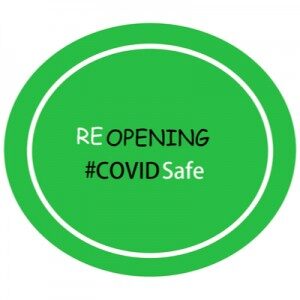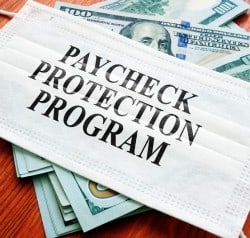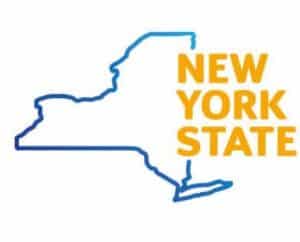As the disease caused by the novel coronavirus (named “coronavirus disease 2019” or “COVID-19”) — spreads globally and now throughout the United States, employers may be wondering when—not “if”—their workplaces will be impacted. While there is no need for U.S. employers to fear that the “sky is falling,” they should be proactive in minimizing the risk of further spread.
Below are some Q & As for employers to consider now. As the situation develops, expect that the questions and answers may evolve too.
Q: What steps can we take now to help keep our employees safe without violating workplace laws protecting confidentiality of medical information, disabilities and other employee rights?
A: There are four immediate steps U.S. employers can take:
- Prepare a written communication to employees regarding the steps your organization is taking to minimize the risk of COVID-19 spread, providing them with information from Centers for Disease Control and Prevention (“CDC”), State and local public health agencies, and OSHA, providing concrete steps to minimize risk, and providing verbal and/or written updates about COVID-19 as more public health information becomes available.
- Prepare and execute on a plan for keeping employees safe and minimizing the risk of COVID-19 spread to employees and clients/customers, including implementing policies and procedures for employees to report when they are sick or experiencing symptoms of COVID-19.
- Prepare: a) an Infectious Disease Preparedness and Response Plan and b) written business continuity/contingency/emergency plan in event that an employee or employees become infected with COVID-19, that your workplace must close, your employees become ill and/or schools/nursing homes/hospitals/caregiving facilities close, requiring your workers to take on care-giving or other responsibilities, and pre-plan if hosting or attending events (and confer with your legal counsel to prepare such plans if you do not have one).
- Confer with your legal counsel on your obligations under the ADA, Rehabilitation Act, FMLA, OSHA, benefits laws, workers’ compensation, short-term disability, wage/hour laws and other potential liability
Q: What Should We Communicate to Employees?
A: Here are a few suggestions regarding your written communication to employees and actions to be taken to sanitize your workplace:
Make employees aware of CDC guidance, including guidance before traveling, and other OSHA and public health recommendations (share CDC fact sheet) like:
- Wash your hands often with soap and water for at least 20 seconds. If soap and water are unavailable, use a hand sanitizer with at least 65% alcohol base. Even if employees wear gloves, they should wash their hands upon removal of the gloves in case their hand(s) became contaminated during the removal process.
- Avoid touching your face with unwashed hands.
- Stay home when you are sick.
- Avoid close contact like kissing, hugging and sharing cups or utensils, with people who are sick. CDC explains “close contact” means within about 6 feet. [1]
- Cover your cough or sneeze with a tissue, then throw the tissue in the trash. If you do not have a tissue, use your sleeve/inside elbow (not your hands).
- Keep work surfaces, telephones, computer equipment and other frequently touched surfaces and office equipment clean. Disinfect frequently touched objects and surfaces, daily.
- Use only disinfectants registered by the U.S. Environmental Protection Agency (EPA), and follow all directions and safety precautions indicated on the label.
- CDC does not recommend face masks for those who are well in preventing the spread of COVID-19; rather, they are most effective when used appropriately by health care workers and people who are sick.
- Pay attention to your health for 14 days after returning to the U.S. from travel to areas identified by CDC with widespread sustained (ongoing) transmission or community spread.
- Stay home and seek medical advice if you get sick with fever, cough, difficulty breathing or other respiratory symptoms.
- Avoid traveling if you are sick.
- Self-monitor for signs and symptoms of COVID-19 if you suspect possible exposure.
- Consider getting a flu immunization to prevent influenza if you have not done so this season (however, there is no indication from any health agency that doing so protects against COVID-19).
Implement Communicable Disease Policies during a pandemic, requiring employees to inform management if they are experiencing symptoms of COVID-19, requiring immediate notification from supervisors to Human Resources, and requiring that management or HR notify other employees if they have been exposed to COVID-19 (while maintaining confidentiality of medical information and without identifying that infected co-worker).
Remind employees of your paid sick and other leave policies, and to stay home if they feel sick, and consider offering more flexible paid sick leave or paid time off at this time to encourage sick employees to rest until they are well. Be consistent in the application of your organization’s policies.
- Notify employees of specific actions that your organization has taken to disinfect the workplace: increasing frequency of the sanitization of common area, door handles and knobs, kitchen and restroom door handles, and elevator buttons; providing additional soap, hand sanitizer and paper towels for use when entering or exiting the premises
- Address any restrictions on work-related travel and be prepared to answer questions from employees about whether they can refuse to travel due to safety concerns for their health
Follow public health advice regarding social distancing: For instance,
- Avoid shaking hands or other physical contact (regardless of whether you know a coworker is sick);
- Reduce the frequency, proximity, and duration of contact with others (both co-workers and clients), and unnecessary social interactions. Minimize situations where groups of people are crowded together, such as in a meeting. Use e-mail, phones and text mess ages to communicate with each other. When meetings are necessary or eating meals, avoid close contact by keeping a separation of at least 6 feet, where possible, and assure that there is proper ventilation in the meeting room.
- Reconsider all situations that permit or require employees, clients, and visitors (including family members) to enter the workplace; and manage third parties who visit the workplace.
- Consider banning non-essential work travel. Consider scheduling meetings by videoconference, rather than in-person, where feasible. Limit the number of in-person meetings or duration of contact.
- Provide clients and the public with tissues and trash receptacles, and with a place to wash or disinfect their hands.
- Refrain from using other employees’ phones, desks, offices or other work tools and equipment.
- If allowing remote work/telecommuting temporarily, you may want to address that option and the parameters/limitations of it in the communication to employees. (see below)
- Train managers on how to handle situations where employees are coughing or sneezing in the workplace
Q: May an employer require employees to stay home if the employee is exhibiting symptoms of COVID-19?
A: Yes, according to the EEOC, the Americans with Disabilities Act (“ADA”)(which applies to employers with 15 or more employees) does not interfere with or prevent employers from following the CDC’s guidelines and suggestions about steps employers should take regarding the novel coronavirus. Where there is factual evidence sufficient to show that the person contracted COVID-19, the employee should self-quarantine at home for 14 days and seek medical attention. The EEOC has issued guidance on dealing with pandemics as it relates to its enforcement of the Americans with Disabilities Act (ADA) that employers may wish to review to understand their legal obligations.
Before an employee returns to work, an employer may require them to bring a doctor’s note that they are fit to return to duty, subject to any State or local restrictions on how soon that documentation may be requested (however OSHA advises against insisting on such a note in view of the fact that with an epidemic such as this one, it may be difficult for an employee to get a doctor’s appointment). Ensure that any infection control plan and the employment decisions around it comply with laws prohibiting workplace discrimination on the basis of disability, national origin, ethnicity, age, race, sex, age, color, religion, and any other legally protected category.
CDC recommends that employees who appear to have acute respiratory illness symptoms (i.e. cough, shortness of breath) upon arrival to work or who become sick during the day should be separated from other employees and sent home immediately, and OSHA also recommends separating the sick from other employees.
Q: May an employer require an employee who has returned from travel to an area identified by the CDC as high-risk to self-quarantine at home for 14 days as a precautionary measure even if the employee shows no symptoms of COVID-19?
A: Yes. In fact, New York State has issued just such a precautionary quarantine, which also extends to people who are not symptomatic but have had proximate (not direct) exposure to a person who has tested positive for COVID-19 (regardless of whether they have travelled from one of the countries identified by CDC as high-risk). The precautionary self-quarantine in New York also applies to any person who local health providers and health departments, as well as the state’s Department of Health, believe needs quarantine. Employers should be consistent, however, in applying any rule to employees.
Q: During a pandemic, may an ADA-covered employer ask an employee why he or she has been absent from work if the employer suspects it is for a medical reason?
A: Yes. Asking why an individual did not report to work is not a disability-related inquiry under the ADA. An employer is always entitled to know why an employee has not reported for work.
Q: How should employers handle work-related travel and conferences/events?
A: Employers may want to consider limiting or canceling non-essential work travel and not attending or postponing conferences or large events, regardless of whether travel or events are international or domestic. The C.D.C. has advised that older adults and travelers with underlying health issues (such as heart disease, chronic lung disease, diabetes, and other conditions that cause suppression of immune system) should, in particular, avoid crowded places, long plane trips, and embarking on cruise ships.
As the novel coronavirus has spread throughout the continental United States, with more than 600 confirmed cases reported as of March 10, 2020 in the U.S., in 34 States (142 cases in New York State alone), and more expected once more testing kits become available, organizations should use common sense about limiting non-essential work travel and delaying the hosting or attending of conferences or events where possible to keep employees safe.
Q: What Should We Do If We Are Hosting an Event/Conference?
A: Consider postponing your event for safety reasons where possible. If postponing or cancelling is not an option, review and follow CDC’s interim guidance on large events and gatherings and other State and local public health guidance for pre-planning to limit exposure where someone gets sick or is sick at an event.
Follow CDC Recommendations for Safety/Health/Disinfecting: Entities may also take into account CDC’s guidance for community and business for workplace proper hygiene to reduce the risk of spread and disinfecting the venue, including, but not limited to, disinfecting “high-touch” areas—doorknobs, restroom handles, faucets, etc., providing alcohol-based hand sanitizer at the event and in restrooms, ensuring there is sufficient soap and water, posting public health advisories in the restrooms like “Cover Your Cough” and other applicable postings for your locale, and providing tissues and waste receptacles. Practice “social distancing”—inform event planners that hosts, attendees, presenters, etc., should be instructed to avoid shaking hands, hugging, kissing, other physical contact, and try to keep at least 6 feet between persons, where possible.
Organizations may want to check the scope of their insurance coverage to see whether they would be covered for any such situation, including event cancellation, business interruption and general liability coverage. Review with your legal counsel your contract with the venue to see if there’s a basis to cancel or reschedule your contract without losing your payment and to determine the scope of indemnification provisions. Consider whether your organization is bringing independent contractors on-site for the event and if so, what safety/health precautions you are taking with respect to their interactions at the event, the risks of doing so, and how you will keep them safe as well.
Q: What Should I Consider with respect to Employee Benefits Issues?
A: In a communication to employees, employers may want to provide a copy of or information about relevant employee benefits like paid sick leave, paid time off, and if applicable based on their jurisdiction, paid family leave, or based on your employee size, Family and Medical Leave Act (FMLA) leave, if applicable. The U.S. Department of Labor (“DOL”) has issued employer guidance on FMLA and COVID-19. Short-term disability benefits may be relevant depending on your organization’s short-term disability plan or the State’s statutory short-term disability benefits.
Note that if an employee contracts COVID-19 while at work or performing work for their employer (particularly employees who are health care providers and first responders), depending on particular State law, they may be able to assert a claim if their illness or injury “arose out of and in the course of employment,” and then the employer may be liable to provide workers’ compensation insurance.
Q: Do I have to pay wages to an employee who is out sick due to COVID-19?
A: It depends. Exempt employees must be paid for any portion of any week in which they work (so if an exempt employee works part of a week but then calls out sick due to COVID-19, that employee must be paid for the full week). Nonexempt employees are only required to be paid for work actually done although employers may allow employees to use paid sick leave if they have it or paid time off if they do not have it. Certain State or local jurisdictions may mandate paid sick leave. Due to the extenuating circumstances of this epidemic, an employer might decide, depending on the circumstance, to provide a more flexible paid sick leave policy during this period of time. The U.S. Department of Labor has recently issued employer guidance on COVID-19 and the federal Fair Labor Standards Act.
Q: If an employee gets COVID-19, may an employer inform other employees so they can seek appropriate medical attention?
A: Employers may and should inform employees that they have been exposed to the virus, but may not disclose to employees the identity of, or information that would reveal the identity of, the employee has contracted the virus due to federal, State and local laws requiring employers to maintain the confidentiality of employee medical information. Employers should be vigilant about this, ensuring managers are trained that they are required to keep confidential any and all medical information they learn regarding an employee.
By law, any medical records must also be kept confidential and should be securely locked in the workplace with access only to those managers with a “need-to-know” in order to comply with the ADA and other disability discrimination and reasonable accommodation laws.
Q: May an ADA-covered employer ask an employee to disclose if they have a weakened immune system or chronic health/respiratory condition that the CDC says could make him or her more susceptible to complications of influenza?
A: No, according to the EEOC guidance. An inquiry asking an employee to disclose a compromised immune system or a chronic health condition is disability-related because the response is likely to disclose the existence of a disability. The ADA does not permit such an inquiry in the absence of objective evidence that pandemic symptoms will cause a direct threat. Such evidence is completely absent before a pandemic occurs.
Q: During a pandemic, may an ADA-covered employer take its employees’ temperatures to determine whether they have a fever?
A: The Equal Employment Opportunity Commission (EEOC) considers taking an employee’s temperature to be an unlawful “medical examination” under the ADA. The ADA prohibits employee medical examinations unless they are “job-related and consistent with business necessity.” Generally, a medical examination of an employee is job-related and consistent with business necessity when an employer has a reasonable belief, based on objective evidence, that: an employee’s ability to perform essential job functions will be impaired by a medical condition, or an employee will pose a direct threat (i.e. a significant risk of substantial harm even with reasonable accommodation) due to a medical condition.
On March 11, 2020, the World Health Organization (WHO) declared COVID-19 a pandemic. The EEOC’s guidance on pandemics says that if pandemic symptoms become more severe than the seasonal flu or the H1N1 virus in the spring/summer of 2009 (as they have with COVID-19), or if a pandemic becomes widespread in the community as assessed by state or local health authorities or the CDC, then employers may measure employees’ body temperature.
The EEOC notes that the U.S. Department of Health and Human Services, the WHO and CDC are the definitive authorities on whether there is a pandemic. Such an assessment by WHO, HHS or the CDC that the pandemic is significantly more severe than a seasonal flu could provide the objective evidence needed for a disability-related inquiry or medical examination of an employee as a “direct threat.” The EEOC further notes: “During a pandemic, employers should rely on the latest CDC and state or local public health assessments. While the EEOC recognizes that public health recommendations may change during a crisis and differ between states, employers are expected to make their best efforts to obtain public health advice that is contemporaneous and appropriate for their location, and to make reasonable assessments of conditions in their workplace based on this information.” Employers should be aware, however, that some people with COVID-19 may not have a fever.
While U.S. employers may have more flexibility to conduct such “medical examinations” under the ADA such as taking employees’ temperature now that the WHO has declared a pandemic, employers should remain mindful of State and local public health assessments about how widespread the virus is as well as State and local anti-discrimination laws that may have more stringent standards for determining when an employer may require medical examinations of asymptomatic employees to identify those a higher risk of COVID-19 complications, and confer with their legal counsel.
Q: What Contingency Plans Should We Be Making for Alternative Work Arrangements, Less Contact and Staffing Coverage?
A: Here are a few considerations:
- Consider allowing flexible work arrangements like allowing employees to work from home or allowing them to start and end work at staggered times or work in shifts.
- Where employees work in a crowded office area or open plan, determine if you can arrange for less than half of the employees to come to the office at a given time. Consider advising employees to take the elevator to the office in smaller numbers and not taking the elevator when it is crowded or mass public transportation at rush hour or when a subway or bus is crowded.
- Ensure that each employee in the office keeps a distance of at least 6 feet from one another.
- Cross-train employees now so that your organization has coverage if any employees are out sick.
Q: If We Want to Institute A Temporary Telecommuting Policy, What Should We Consider?
A: If you decide to allow employees to work remotely from home on a temporary basis during this period, here are just a few things to consider: 1) determining which positions are amenable to remote work; 2) whether you have technology that would allow employees to participate in meetings by video-conference; 3) setting forth guidelines for timekeeping/recording hours worked, considering whether to implement time-tracking software, and ensuring that nonexempt employees are informed about not working overtime without advance permission from supervisors or doing “off-the-clock” work; 4) implementing data security/data privacy measures to protect the privacy/confidentiality of data on laptops and electronic devices; 5) determining whether your worker’s compensation policy will cover at-home work for office workers; and 6) considering a telecommuting agreement with employees. Confer with your legal counsel on any policy or agreement you develop and data security/data privacy measures to be implemented.
Q: Can an Employer Be Legally Liable if An Employee Contracts COVID-19 at Work or on a Work-Related Assignment or Through Work Passes the Illness on to Someone Else?
A: The federal Occupational and Safety Health Act’s (OSHA) “general duty clause” requires employers to provide a workplace free from recognized hazards that are causing or likely to cause death or serious physical harm, and failure to do can be a violation of OSHA Act resulting in monetary damages. OSHA will look to the CDC’s own recommendations to employers, National Institute of Occupational Safety and Health, and other such agencies in determining whether an employer violated the “general duty clause” and failed to take appropriate steps to keep employees safe from recognized hazards. Employers should follow the precautionary steps recommended by the CDC, OSHA and State and local public health agencies to minimize the risk of a potential negligence claim (or potential workers’ compensation claim, depending on the jurisdiction).
OSHA recommends that employers develop an Infectious Disease Preparedness and Response Plan, Basic Infection Prevention Measures, develop policies and procedures for prompt identification and isolation of sick people, if appropriate, develop and implement workplace flexibilities and protections, and workplace controls, among other things. OSHA also recommends moving potentially infectious people to a location away from workers, customers, and other visitors until they can be removed from a worksite, and taking steps to limit spread of the respiratory secretions of a person who may have COVID-19, like providing a face mask, if feasible and available, to that person and asking them to wear it, if tolerated. Confer with your legal counsel about developing these plans and procedures. OSHA prohibits retaliation against an employee for complaining of a safety or health issue, which may include an employee refusing to work in the office or travel to an area due to fear if their fear is reasonable and fact-based.
Q: What Should We Do If There is “Water-Cooler” Talk Expressing Fear of Chinese or Asians or Disparaging Comments Based on Race or National Origin in View of the Virus’ spread from China?
A: Because the COVID-19 epidemic originated in China and has spread to South Korea and Japan, employers and their managers need to be alert to and quash any statements or bias expressed by employees against Asians or others based on a fear that they carry the virus. Employers may also want to consider posting CDC’s own Fact Statement about the virus to educate employees. Failure of a manager to address such comments could make an Asian employee feel targeted or ostracized based on their race, national origin or ethnicity and negatively impact employee morale, and might also subject an employer to claims of having created or condoned a hostile work environment based on race, national origin or ethnicity. As we know, this virus has spread globally—to Europe, Australia, and now the U.S., and affects all of us.
Q: If a vaccine is developed, may employers require all employees to be vaccinated against the novel coronavirus?
A: Employers must provide employees an opportunity to opt-out from mandatory vaccinations if there is a medical reason for an employee to do so or their religion prohibits it, in order to comply with laws prohibiting workplace discrimination based on disability and religious beliefs and practices. At this point, no vaccine yet exists. The EEOC advises that generally employers should encourage employees to get vaccinated rather than mandating it. There may be exceptions, of course, for federal and State regulations requiring vaccinations for certain health/safety positions.
Q: Where Can Employers Get More Information?
A: Employers are advised to:1) sign up for alerts from the CDC; 2) regularly check CDC’s website for additional information, including the interim employer guidance and an easy-to-follow chart, an interim guidance for schools; 3) check the website of their State and local public health departments for updates[2] (and the World Health Organization); 4) review publications and updates from the EEOC, US Department of Labor, OSHA, and State and local anti-discrimination agencies for the latest guidance on handling COVID-19 in the workplace.
Conclusion
While we answer some questions that may arise for employers, it’s important to emphasize that employers should use good common sense about what precautions to take, without causing alarm in the workplace. So, take a deep breath, and start implementing your plans to keep your organization’s employees safe, keep your operations running, and minimize your legal risk.
For questions about this Alert or creating workplace plans or policies to plan for COVID-19 or for employee training, please contact Lisa Brauner, Esq., Head of Perlman & Perlman LLP’s Employment Law Department, lisa@perlmanandperlman.com, 212-889-0575.
[1] CDC reports that the virus is thought to spread mainly from person-to-person between people who are in close contact with one another (within about 6 feet) through respiratory droplets produced when an infected person coughs or sneezes, and that the droplets can land in the mouths or noses of people who are nearby or possibly be inhaled into the lungs.
[2] For NY State and NYC see below (contact us for information concerning other States)
New York employers and businesses can find guidance from the New York State Department of Health on COVID-19 and how to minimize the risk of spread. New York State has also set up a hotline (1-888-364-3065) for information about COVID-19.
New York City Department of Health has also issued an updated fact sheet about COVID-19 and other interim safety/health guidance for businesses, congregate settings (like workplaces, schools, assisted living facilities, nursing homes, homeless shelters, religious services, community gatherings, large events, etc.), schools, universities, and non-healthcare settings on disinfecting and preventative measures, in a variety of languages, as well as posters like “Cover Your Cough.” It also provides a NYC website for COVID-19 updates. New Yorkers can also text COVID to 692-692 to get regular updates on the latest developments regarding COVID-19. NYC is advising those with chronic lung disease, heart disease, cancer, diabetes, or a weakened immune system to avoid unnecessary events and gatherings, and if a New Yorker has family or friends who have one of these conditions, not to visit them if the New Yorker feels sick.
California (Los Angeles/San Francisco): California Department of Public Health, Updated Guidance on Schools and Large Events, Los Angeles County Department of Public Health
LA County residents can also call 2-1-1, Workplace Posters
San Francisco Department of Public Health
- Perlman & Perlmanhttps://perlmanandperlman.com/author/nancyisrael/
- Perlman & Perlmanhttps://perlmanandperlman.com/author/nancyisrael/
- Perlman & Perlmanhttps://perlmanandperlman.com/author/nancyisrael/
- Perlman & Perlmanhttps://perlmanandperlman.com/author/nancyisrael/














